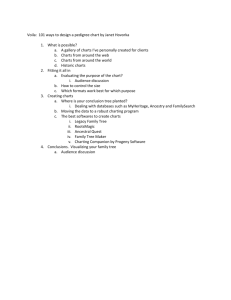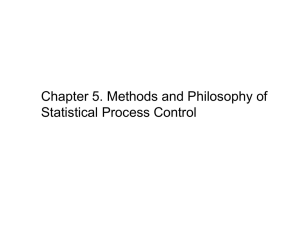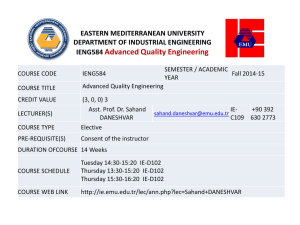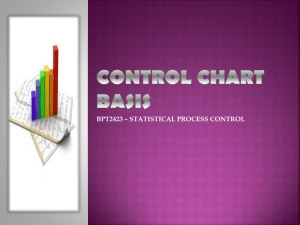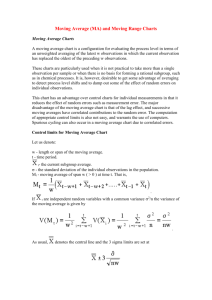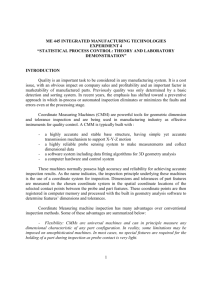Control Charts
advertisement
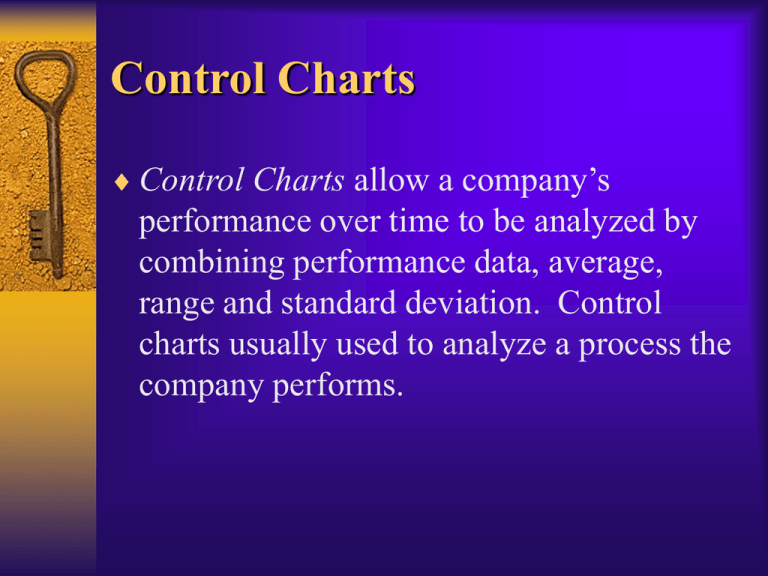
Control Charts Control Charts allow a company’s performance over time to be analyzed by combining performance data, average, range and standard deviation. Control charts usually used to analyze a process the company performs. Data The data used in the control charts we Data will discuss (X bar and R Charts) are samples of a population From Gillette example 15 hours become 15 subgroups representing the total population of razor blades and each subgroup will have 5 data values n = 5. Table of Data from Gillette Example 5 measurements for each subgroup Subgroups Calculations for the Data Find the mean (X) and the range for each subgroup 1. X = ( Σ xi ) / n 2. R = Max (xi) – Min (xi) Find the mean of the X and Range 1. X = ( Σ X i ) / (#of sub groups ) 2. R = ( Σ Ri ) / (# of sub groups ) Data with Calculated figures Create Control Charts Limits to our Control charts Upper and lower control limits represent 3 standard deviations above and 3 standard deviations below the mean line respectfully. Instead of calculating the standard deviation for all of the sample data we use these simple equations Control Limit Equations X (UCLx) = X + A2*R X (LCLx) = X - A2*R Where A2 can be found on page 237 of your Intro to IE textbook R (UCLR) = D4*R R (LCLR) = D3*R Where D4 and D3 can be found on page 237 of your Intro to IE textbook. Finished Control Charts Control Chart Analysis To analyze the control charts it is important to remember that the data is represented over six standard deviations, there are three standard deviations from the mean line to the upper control limit and three from the mean to the lower control limit. To help analyze the charts, it is important to divide the chart area into six sections A, B, and C representing the standard deviations. Example of Different Zones Interpreting the Control Chart To interpret the data we first look at the R chart. The R chart represents the variety in the data and if the variety is to great than there is no need to look at the X control chart. The chart is out of control if one or a combination of the following four examples occur: Process out of Control 1. If one point falls outside of the 3 sigma control limits (beyond zone A) Process out of Control 2. If two out of any three successive points fall in zone A of the same side Process out of Control 3. If four out of any five successive points fall in or beyond zone B of the same side Process out of Control 4. If eight successive points fall in or beyond zone C of the same side How does the Co-ops Control Charts Look?

